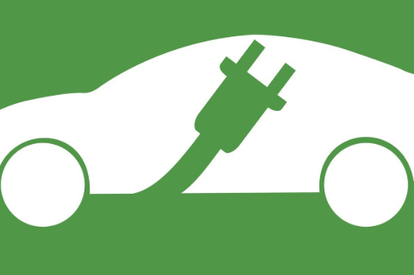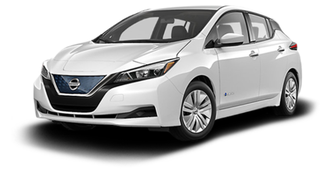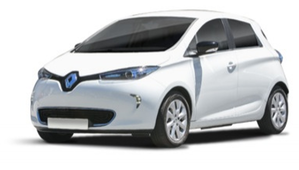Choice of EVs
The first step in our project, was to choose the electric vehicles that would consist the EV fleet of Findhorn Ecovillage. The focus was on Battery Electric Vehicles (BEVs), that have the smallest amount of CO2 emissions [7] and are the worst case in terms of demand for the grid. Based on statistics for EV popularity [5] and on the research results available on online sources, the chosen models were: Nissan Leaf 2018 (Tekna), Renault Zoe R90 (2017) and BMW i3 (2017). The next step was the identification of the tool that was going to be used for the estimation of demand profiles. The tool used defined the parameters that needed to be researched in order to be used as inputs on the models.
Charging Type and Charger Operation
.png?1526066296)
Another modelling parameter that needed to be defined was the type of charging that would be simulated. The type of charging chosen was home charging, using G-sockets that are used in the United Kingdom. These sockets, according to British Standards [2] can output maximum 13A (3kW) and can be used for Slow (home) charging. Slow charging was chosen because Findhorn Ecovillage is a small village of 500 residents.
Charging stations were not used on this case, cause they are more common in urban areas, where people travel greater distances, use the car more frequently and the amount of vehicles that need charging is bigger (therefore the charging must be faster in order to avoid queuing of EVs on charging points).
Charging stations were not used on this case, cause they are more common in urban areas, where people travel greater distances, use the car more frequently and the amount of vehicles that need charging is bigger (therefore the charging must be faster in order to avoid queuing of EVs on charging points).

The next step was to define the Charger Operation Mode, which is the mode that charger delivers power to the battery of EV. Batteries of different chemistry demand different charger operation modes. All of the simulated EVs, have Li-Ion batteries [3], [4], [6]and according to [1] the charger mode used for this type of batteries is Constant Current Constant Voltage (CCCV) method.
In CCCV method, a current is applied until the battery reaches 80-90% of its full capacity. After that, current is cut off and a constant voltage is applied until the battery reaches its full capacity. This procedure slows down the charging process significantly but protects the battery from overheating and overcharging. It is also used to protect the battery from the ageing effects that charging with rapid currents may have on its lifetime [1].
In CCCV method, a current is applied until the battery reaches 80-90% of its full capacity. After that, current is cut off and a constant voltage is applied until the battery reaches its full capacity. This procedure slows down the charging process significantly but protects the battery from overheating and overcharging. It is also used to protect the battery from the ageing effects that charging with rapid currents may have on its lifetime [1].
References
[1]. Battery University. (2018, April 24). BU-409: Charging Lithium-ion. Retrieved from http://batteryuniversity.com: http://batteryuniversity.com/learn/article/charging_lithium_ion_batteries
[2]. British Standards. (2018). PlugSafe Protecting BS 1363 - the world’s safest mains plug and socket. Retrieved from www.bs1363.org.uk: http://www.bs1363.org.uk/
[3]. cleantechnica.com. (2016, November 11). https://cleantechnica.com. Retrieved from Details On Renault Zoe ZE 40 Battery Packs: https://cleantechnica.com/2016/10/11/details-renault-zoe-ze-40-battery-packs/
[4]. insideevs.com. (2017, December 25). BMW i3 With 120Ah Battery Coming In Late 2018. Retrieved from https://insideevs.com: https://insideevs.com/bmw-i3-with-120ah-battery-coming-in-late-2018/
[5]. Lily, C. (2018, January 05). Electric car market statistics. Retrieved from www.nextgreencar.com: http://www.nextgreencar.com/electric-cars/statistics/
[6]. PushEVs. (2018, January 29). 2018 Nissan Leaf battery real specs. Retrieved from https://pushevs.com: https://pushevs.com/2018/01/29/2018-nissan-leaf-battery-real-specs/
[7]. Union of Concerned Scientists. (2017). How Clean is your Electric Vehicle. Retrieved from www.ucsusa.org: https://www.ucsusa.org/clean-vehicles/electric-vehicles/ev-emissions-tool
[2]. British Standards. (2018). PlugSafe Protecting BS 1363 - the world’s safest mains plug and socket. Retrieved from www.bs1363.org.uk: http://www.bs1363.org.uk/
[3]. cleantechnica.com. (2016, November 11). https://cleantechnica.com. Retrieved from Details On Renault Zoe ZE 40 Battery Packs: https://cleantechnica.com/2016/10/11/details-renault-zoe-ze-40-battery-packs/
[4]. insideevs.com. (2017, December 25). BMW i3 With 120Ah Battery Coming In Late 2018. Retrieved from https://insideevs.com: https://insideevs.com/bmw-i3-with-120ah-battery-coming-in-late-2018/
[5]. Lily, C. (2018, January 05). Electric car market statistics. Retrieved from www.nextgreencar.com: http://www.nextgreencar.com/electric-cars/statistics/
[6]. PushEVs. (2018, January 29). 2018 Nissan Leaf battery real specs. Retrieved from https://pushevs.com: https://pushevs.com/2018/01/29/2018-nissan-leaf-battery-real-specs/
[7]. Union of Concerned Scientists. (2017). How Clean is your Electric Vehicle. Retrieved from www.ucsusa.org: https://www.ucsusa.org/clean-vehicles/electric-vehicles/ev-emissions-tool

UNIVERSITY OF STRATHCLYDE
Address:
16 Richmond St
Glasgow G1 1XQ
United Kingdom
Phone:
+ 44 141 552 4400
Address:
16 Richmond St
Glasgow G1 1XQ
United Kingdom
Phone:
+ 44 141 552 4400



